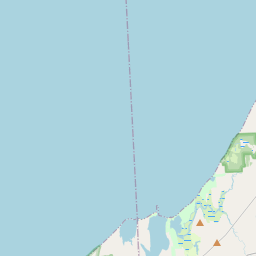Asa Rice
Historical marker location:
7290 St. Rt. 104, Oswego, New York
( Marker is on New York State Route 104.)
Marker installed: 2018







© OpenStreetMap contributors
Loading...
Searching for other points of interest within 3 miles of this location.New York State was the site of the deadliest terrorist attack in United States history prior to 9/11. In 1993, a bomb planted in the World Trade Center by Islamic extremists killed six people and injured more than a thousand others.
About Oswego County
Oswego County Timeline
Oswego County, located in the state of New York, has a rich history that spans over centuries. The region was originally inhabited by Native American tribes, such as the Iroquois and the Algonquin people, who relied on the area's abundant natural resources for their sustenance and trade.
The arrival of Europeans in the 17th century brought significant changes to the area. French explorers were the first to discover the region, followed by Dutch and English settlers. The site where the city of Oswego now stands became an important trading post, attracting fur traders and leading to the establishment of Fort Oswego in 1727. The fort played a crucial role in the French and Indian War, as well as the American Revolution.
During the early 19th century, the construction of the Erie Canal brought economic prosperity to Oswego County. The canal connected the Great Lakes to the Hudson River, making Oswego a vital transportation hub for goods and people. The development of the canal also fueled the growth of industry in the county, particularly in the city of Oswego, which became a major center for shipping, manufacturing, and commerce.
In the 20th century, Oswego County's economy shifted towards manufacturing, particularly in the steel and automotive industries. The construction of power plants along the Oswego River, including the James A. FitzPatrick Nuclear Power Plant, brought new job opportunities and bolstered the county's energy sector. Today, Oswego County continues to thrive as a center for tourism, agriculture, and renewable energy production, with attractions like the Oswego Harborfest and the Salmon River Fishing Derby drawing visitors from near and far.
The arrival of Europeans in the 17th century brought significant changes to the area. French explorers were the first to discover the region, followed by Dutch and English settlers. The site where the city of Oswego now stands became an important trading post, attracting fur traders and leading to the establishment of Fort Oswego in 1727. The fort played a crucial role in the French and Indian War, as well as the American Revolution.
During the early 19th century, the construction of the Erie Canal brought economic prosperity to Oswego County. The canal connected the Great Lakes to the Hudson River, making Oswego a vital transportation hub for goods and people. The development of the canal also fueled the growth of industry in the county, particularly in the city of Oswego, which became a major center for shipping, manufacturing, and commerce.
In the 20th century, Oswego County's economy shifted towards manufacturing, particularly in the steel and automotive industries. The construction of power plants along the Oswego River, including the James A. FitzPatrick Nuclear Power Plant, brought new job opportunities and bolstered the county's energy sector. Today, Oswego County continues to thrive as a center for tourism, agriculture, and renewable energy production, with attractions like the Oswego Harborfest and the Salmon River Fishing Derby drawing visitors from near and far.
Oswego County Timeline
This timeline provides a concise overview of the key events in the history of Oswego County, New York.
- 1792: Oswego County is established as one of the original counties in New York State.
- 1796: The city of Oswego is incorporated, becoming an important port on Lake Ontario.
- 1816: The construction of the Oswego Canal begins, connecting the city of Oswego to the Erie Canal.
- 1828: The city of Fulton is incorporated, becoming a center for manufacturing and commerce.
- 1836: The town of Pulaski is formed, named after the Polish general Casimir Pulaski.
- 1850: The city of Phoenix is incorporated, known for its involvement in the salt industry.
- 1861: Oswego County supports the Union during the American Civil War.
- 1902: The city of Oswego experiences a major fire that destroys a significant portion of the downtown area.
- 1950s: The St. Lawrence Seaway opens, providing access to the Great Lakes and boosting trade in Oswego County.
- 1998: The county celebrates its bicentennial anniversary.
- 2010: The county experiences population growth, driven by economic development activities.